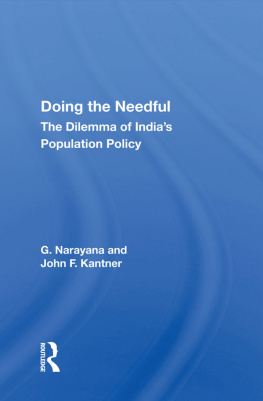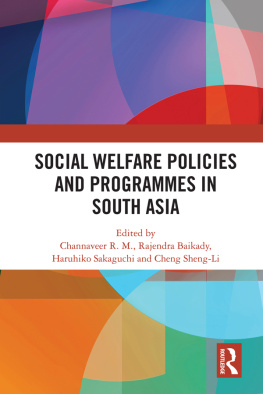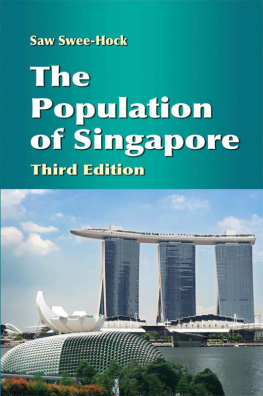First published 1992 by Westview Press, Inc.
Published 2021 by Routledge 605 Third Avenue, New York, NY 10017 2 Park Square, Milton Park, Abingdon, Oxon OX14 4RN
Routledge is an imprint of the Taylor & Francis Group, an informa business
Copyright 1992 by Taylor & Francis
All rights reserved. No part of this book may be reprinted or reproduced or utilised in any form or by any electronic, mechanical, or other means, now known or hereafter invented, including photocopying and recording, or in any information storage or retrieval system, without permission in writing from the publishers.
Notice: Product or corporate names may be trademarks or registered trademarks, and are used only for identification and explanation without intent to infringe.
Library of Congress Cataloging-in-Publication Data Narayana, G. Doing the Needful: The Dilemma of India's Population Policy / G. Narayana, John F. Kantner p. cm. Includes bibliographical references and index. ISBN 0-8133-8432-X 1. Birth controlIndia. 2. Birth controlGovernment policyIndia. 3. Indiapopulation policy. I. Kantner, John Frederick, 1920 II.Title. HQ766.5.15N283 1992 363. 9'6'0954dc20
91-23370 CIP
ISBN 13: 978-0-3670-1142-0 (hbk) ISBN 13: 978-0-3671-6129-3 (pbk)
DOI: 10.4324/9780429041280
Preface
At the moment of the long awaited "tryst with destiny," as Prime Minister Nehru announced the advent of an Independent India, there were less than 350 million Indians to share the exhilaration of that midnight hour. Since then much has happened. Some hopes have been fulfilled; perhaps more have been denied. The nation stands in great peril, both for the sanctity of its democratic institutions and processes and for the unity of its culturally diverse parts.
Today there are half a billion or so more Indians than were present at the nation's birth. For many, life chances have improved but the "poor" in present day India are almost as numerous as the entire population at the time of the last pre-Independence Census.
Independent India has had a troubled history. While it has made it through some difficult times, the problems now confronting the country are as serious as any in its short history. Unless these are solved, the result could be the abrogation of the democratic principles which this nation, more than almost any other new nation of the modern period, has struggled to preserve. And yet many who know India have faith that as the old order passes, as it surely will, the resolve to survive without overturning the institutions and values that India takes as its heritage will come forward and prevail. But like a sack full of writhing cobras, religious bigotry, caste conflict, political pandering and posturing, corruption and unenlightened, unbridled self interest threaten to break through a dangerously threadbare social fabric. A favorable outcome cannot be taken for granted.
India's dilemma is that the things it must do to save itself as a unified and democratic nation frequently run counter to the deep seated, conflicting interests of obdurate and powerful constituencies. The result is paralysis of political decision and a neutralized bureaucracy.
A chorus of intellectuals deplores and excoriates these practices but to little effect. The "great souls" that occasionally appear, meteor-like in this darkening sky, raise one's gaze to higher possibilities but have not, since Gandhiji's time, been able to summon the mass of the people to greater purpose. n these respects India is not different from other diverse and troubled nations that seek to orchestrate their differences through a functioning system of governance.
This book is not about anything so broad as the health of Indian society. It deals instead with a particular problem, the problem of rapid population growth, that makes India's transition to a post-agrarian order more difficult than it might otherwise be. Population growth is not India's most troubling problem, at least not in the short run. It is one, however, that must be addressedand in a more effective manner than so far has been the case. And so the book is about the nature of those efforts, the reasons they have not been more successful and how they might be improved.
A major theme of what is written here is the pervasive nature of the failures that have beset India's interventions in the social service area and the commonality of the approaches that have led to those failures. While many have made suggestions toward better policy and improved programsand we do so here alsothe problem lies in large part beyond the reach of particular program modifications. What is required is a reorientation of policy, a redirection of effort, a "basic overhaul" of administration and fundamental change in attitudes and relationships throughout the systems whereby the society (we do not say, merely, "the government") looks out for its welfare. We do not have the answers to all of the questions we shall raise. We do present ideas, not all of them new or original, that represent breaks with past approaches and promising avenues of advance toward a future in which the nation can invest more in the quality of its people and less in paying the costs of excess numbers.








